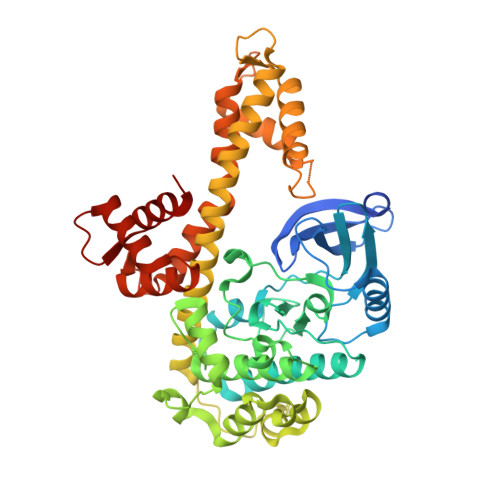Toxoplasma gondii calcium-dependent protein kinase 1 is a target for selective kinase inhibitors.
Ojo, K.K., Larson, E.T., Keyloun, K.R., Castaneda, L.J., Derocher, A.E., Inampudi, K.K., Kim, J.E., Arakaki, T.L., Murphy, R.C., Zhang, L., Napuli, A.J., Maly, D.J., Verlinde, C.L., Buckner, F.S., Parsons, M., Hol, W.G., Merritt, E.A., Van Voorhis, W.C.(2010) Nat Struct Mol Biol 17: 602-607
- PubMed: 20436472
- DOI: https://doi.org/10.1038/nsmb.1818
- Primary Citation of Related Structures:
3I79, 3I7B, 3I7C - PubMed Abstract:
New drugs are needed to treat toxoplasmosis. Toxoplasma gondii calcium-dependent protein kinases (TgCDPKs) are attractive targets because they are absent in mammals. We show that TgCDPK1 is inhibited by low nanomolar levels of bumped kinase inhibitors (BKIs), compounds inactive against mammalian kinases. Cocrystal structures of TgCDPK1 with BKIs confirm that the structural basis for selectivity is due to the unique glycine gatekeeper residue in the ATP-binding site. We show that BKIs interfere with an early step in T. gondii infection of human cells in culture. Furthermore, we show that TgCDPK1 is the in vivo target of BKIs because T. gondii expressing a glycine to methionine gatekeeper mutant enzyme show significantly decreased sensitivity to BKIs. Thus, design of selective TgCDPK1 inhibitors with low host toxicity may be achievable.
Organizational Affiliation:
Division of Allergy and Infectious Diseases, Department of Medicine, University of Washington, Seattle, Washington, USA.

















